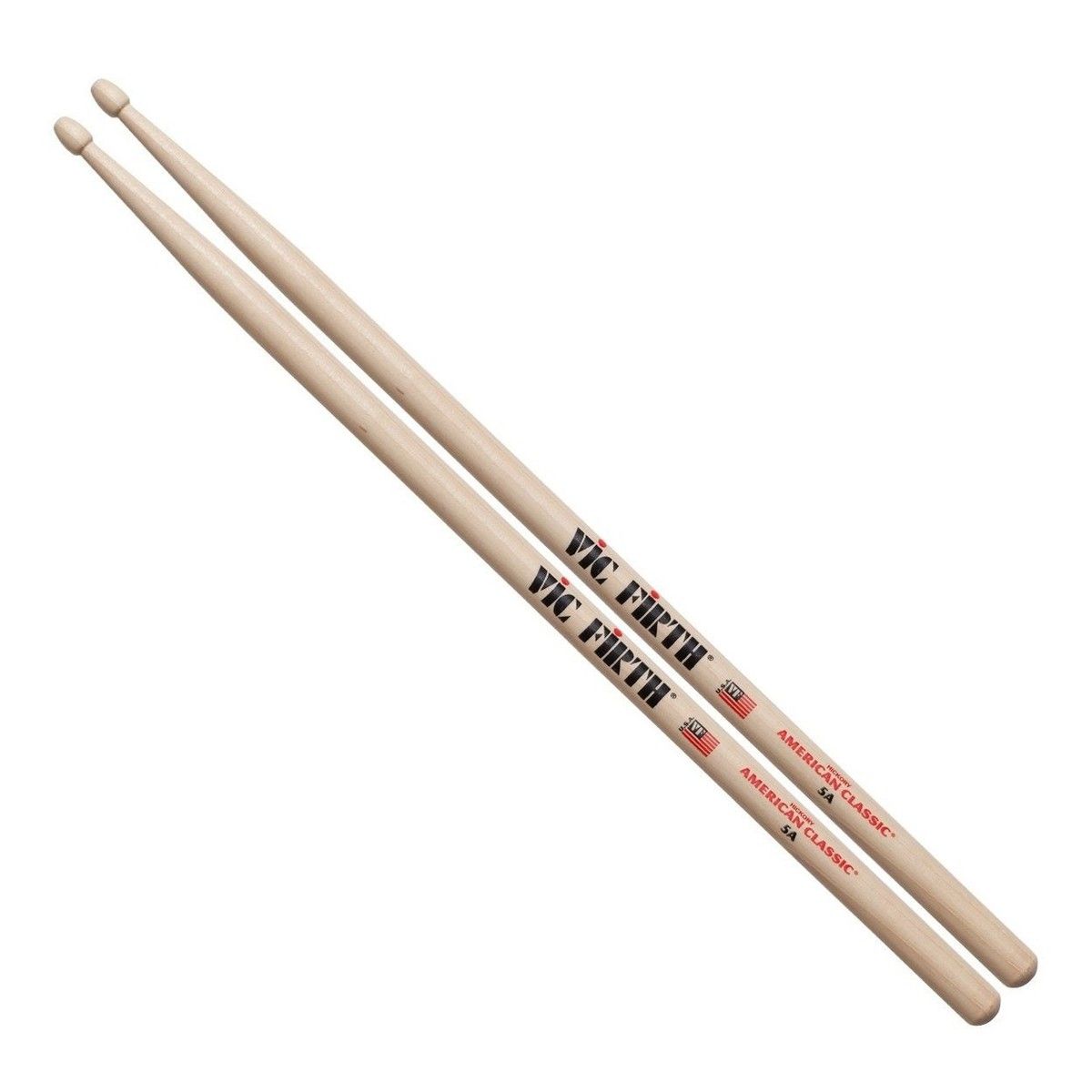Essential Drumming Guide - Part 1: Everything you need to kickstart your drumming
This is part of a series for beginners, covering all the main talking points on drumming. Today, I’ll explain everything you should consider when starting out, and how to make choices that will benefit you.

Got the urge to hit some skins but don’t know where to start? No problem!
I’ve created a guide below for all new drummers so you can make a positive start on your journey. This is part of a series for beginners, covering all the main talking points on drumming. Today, I’ll explain everything you should consider when starting out, and how to make choices that will benefit you.
1. Gear
Sticks:
First and foremost, you’ll need some drumsticks. Once you’ve got yourself a pair, the world is your oyster. Whether it’s pots, pans, or a pillow, you can start playing. They’re cheap and you can buy some from your local music store, or almost anywhere online.
As for the size/make, I’d recommend trying 5A’s to start with - or if you want to hit a little harder, try 5B’s. Better yet, get two pairs and see which ones you prefer. Vic Firth, Pro-Mark and Vater are all reliable brands (but go for the sticks that cost between £10-£15, they’ll last you much longer than cheaper ones).

Drumkit:
Now, this is the big decision. Just like buying a car, there are many different brands of kits, in varying conditions, spanning a wide price range. It can be confusing, but there are a few things to consider before choosing your new weapon. The main question is electric or acoustic. Both have benefits and drawbacks, and they’re very different. Usually, it depends on how much noise you can make. As a beginner, there’s no right or wrong choice (but it’s worth experiencing the feel of an acoustic kit eventually!). Either way, I’d recommend visiting a local drum shop to try out the different kits. Even if you’re buying a second-hand acoustic kit on eBay, always try before you buy.
There are some great budget options out there, and it’s possible to get a decent second-hand starter kit for two to three hundred pounds. However, you’ll need to be a savvy spender. If you’re unsure about the quality of a brand, drumhead or cymbal, get a second opinion. Ask another drummer or post a question in an online drum forum.
(Top tip: if you’re buying second-hand cymbals too, always check for any small cracks or keyholing).
Maybe a drumkit isn’t even an option – you might not have the funds, or space. Maybe you’re still unsure about buying one. Luckily, there is a handy alternative that all drummers should have regardless…
Pad:
Practise pads are amazing, for many reasons. They’re everything that the average drumkit isn’t – cheap, quiet and easy to transport. Essentially, it’s a rubber pad
I own two Evans Realfeel pads (12” & 6”), which I generally recommend to anyone who hasn’t got one already. It won’t replace the feeling of playing on a kit, but pads are still important for drummers. It allows us to practise almost anywhere at any time. Fundamental skills such as speed, control, timing and technique can all be improved by practising rudiments on a pad.
For the 12-inch pads, I’d recommend mounting them on a snare stand. For the 8-6 inch pads, you can buy a practise pad stand and screw it on top. Also, you can buy a knee pad mount that straps around your leg. This is a great option if you want to practise on the go or while you’re away from home.

2. Lessons & Resources
As a beginner, naturally, you’ll want to get behind a kit at some point to get a feel for the instrument. Even if you don’t know how to play, sitting down and hitting the drums is one of the most enjoyable experiences a human can have (in my opinion). That’s how I started, just by sitting down at a drumkit and playing. Sometimes, that’s all it takes to unlock a new passion. Still, you’ll need to practise and develop your skills if you want to get good. On that note, let’s evaluate the different options available to us.
Lessons:
There are many advantages to having lessons. If you have private tuition, you’ll likely have a teacher with years of experience and a wealth of knowledge. At such an early stage, this is invaluable when you’re learning the fundamentals. They’ll be able to spot any technical flaws or bad habits in your playing, which could prove to be priceless in terms of progression. Many drummers become hindered by their technique at some point. Professional tutors can solve or prevent these problems, ensuring a consistent improvement in your playing. To quote the great Ted Reed ‘there is no substitute for a good teacher.’
Self-teaching:
Lessons aren’t for everyone. It’s possible to teach yourself – so long as you do your research and have a keen awareness of your instrument. If you’re blessed with a strong sonic perception, learning songs by ear is a route many people start with. Despite this, you’ll only get so far on your own. Naturally, you will need to absorb information from experienced drummers in some form. Luckily, we have a wealth of information available to us across the internet.
Knowledge is power - so long as it’s reliable. There are hundreds of helpful exercises and resources on drum websites and YouTube, along with many trustworthy drumming books. These have become especially helpful for me now that I no longer have lessons. Even if you do take lessons, you can still learn so much from these resources. Finally, if you choose to self-teach yourself, I recommend connecting with other drummers on a regular basis. Having a network of fellow drummers who can give advice or help tweak little things in your playing will help you more than you believe.
Recommended resources:
https://www.youtube.com/c/freedrumlessons
https://www.youtube.com/user/DrummerEtc
https://www.youtube.com/c/StephenClarkTheNonGlamorousDrummer
https://www.courses.totaldrummer.com/bundles/total-drummer-academy
Books:
Syncopation - Ted Reed
A Fresh Approach to the Snare Drum - Mark Wessels
Stick Control - George Lawrence Stone
The Best Beginner Drum Book - Drumeo
3. Inspiration
YouTube & Instagram videos seem to be the primary source of inspiration for drummers in the modern day, although it all depends on your mindset. It’s easy to watch clips of Buddy Rich soloing for ten minutes and think ‘I could play all day every day and never get to that standard.’ But equally, if you could learn just one of those fills, you’d feel like a genius. The key is to break things down into small, achievable goals. There is so much you can learn and develop on the drums (almost too much), so matching the difficulty to your skill level is very important.
The first thing I teach beginner drummers is how to play the ‘money beat.’ This is the go-to drum beat for so many famous rock & pop songs (Billie Jean, Just Dance, Highway to Hell etc.) I do this because once they’ve got it down, they can play along to hundreds of songs. Chances are, they’ll be a song that they wanna jam to. For me, that’s what makes drumming enjoyable. Drum solos are brilliant - but playing along to music (& playing with other musicians) is where it’s really at. After all, we’re musicians, not just drummers.
If you’re looking for some inspiration to pick up the sticks, here are a few suggestions:
4. Last but not least – patience and persistence.
By practising consistently, if you believe in those two principles, you can achieve your goals. It takes time, but just know that you will get there if you stick to it! (pardon the pun).
